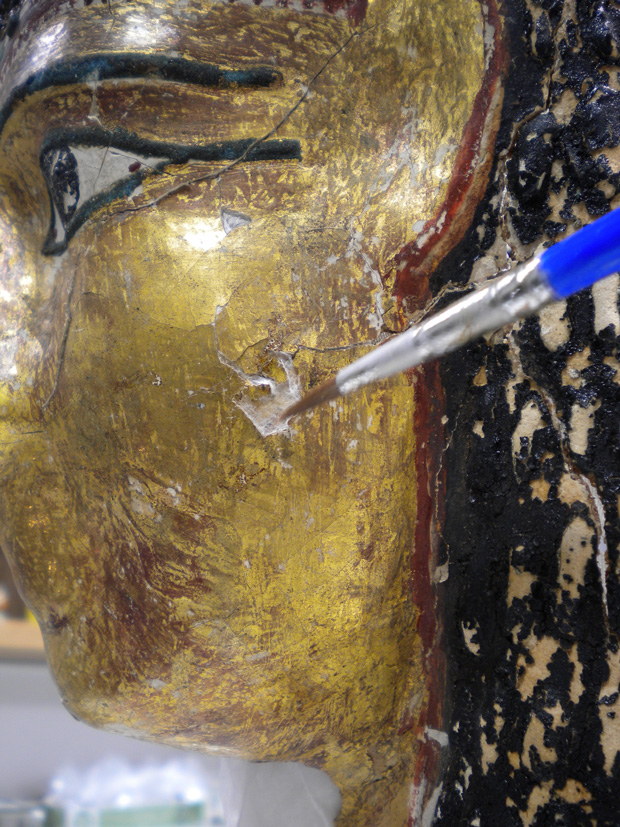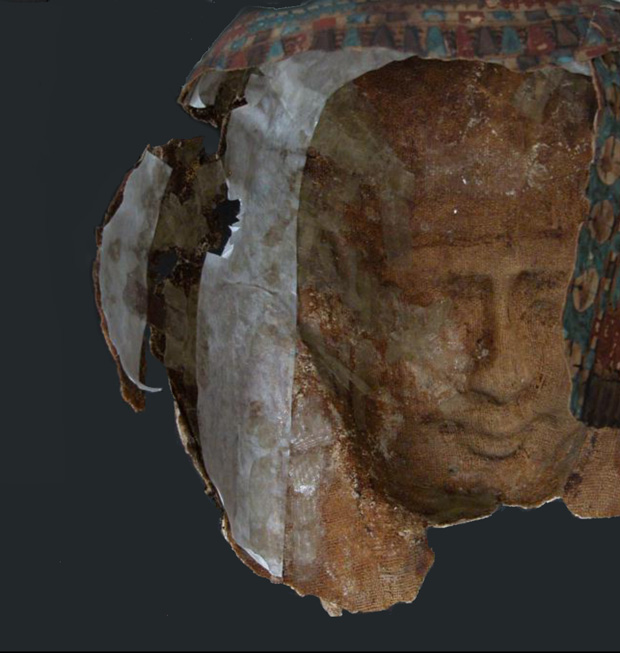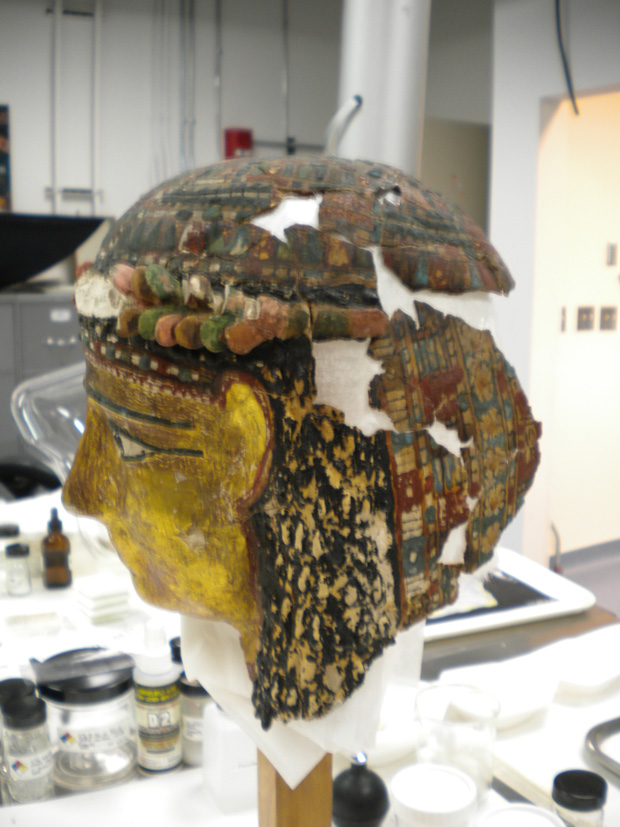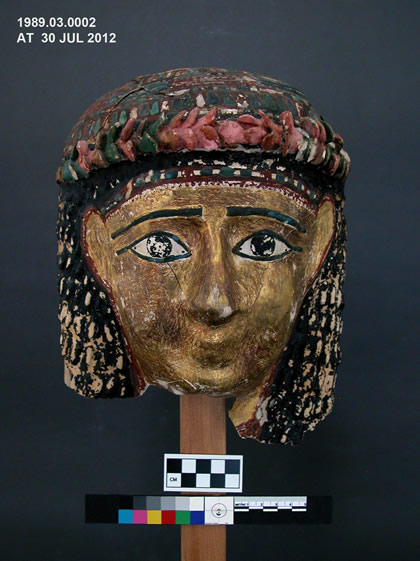Cartonnage Mummy Mask
This Graeco-Roman Egyptian mask — likely made for a woman — was once placed over the head of a mummy. It is made of a thin, layered material called cartonnage, which is made by soaking strips of linen in glue and laying the strips down over a head-shaped form, or the actual head of a mummy. The wet linen was allowed to dry, creating a perfectly contoured mask. The mask was then covered with a thin layer of gesso, painted, and gilded.

Filling of losses in the gilding.
Large sections of the mask — including the back and shoulders — are missing, and until recently the mask was too unstable to display. A conservation treatment plan was created to make the mask stable enough to display.

Interior of the mask before treatment.
Repairs were made from Japanese tissue, making the fragile sides and top of the mask stronger. Japanese tissue is a soft, long-fibered paper made from the fibers of a variety of plants common to Japan, including the mulberry tree. Painted Japanese tissue was also used to fill in losses in the face and sides of the mask.

Japanese tissue fills during treatment.

Mummy mask after treatment.
